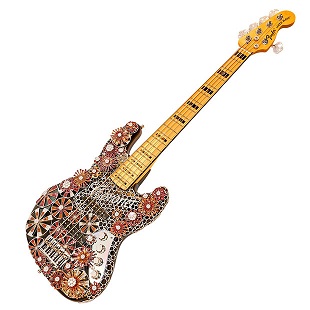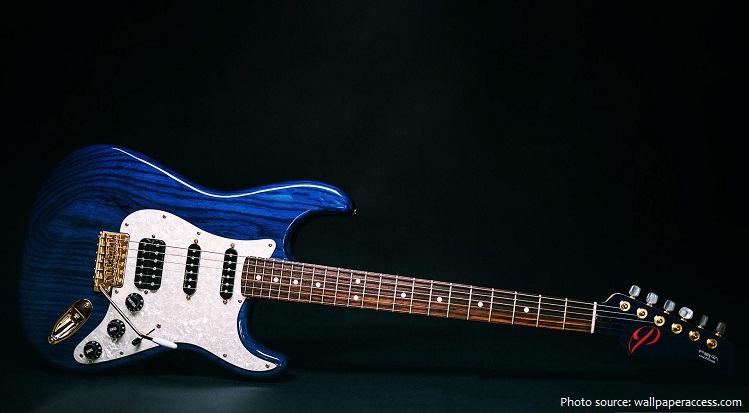
An electric guitar is a guitar that produces sound by vibrating strings over a pickup that converts the vibrations into electrical signals. Those signals are fed into an amplifier, which projects the musical performance at a wide range of volumes.
Electric guitar design and construction varies greatly in the shape of the body and the configuration of the neck, bridge, and pickups. Guitars may have a fixed bridge or a spring-loaded hinged bridge, which lets players “bend” the pitch of notes or chords up or down, or perform vibrato effects.
Pickups convert the vibrations of the strings into an electric signal, which is then sent to an amplifier over a shielded cable.
There are several types of electric guitar, including: the solid-body guitar – various types of hollow-body guitars – the six-string guitar (the most common type), which is usually tuned E, B, G, D, A, E, from highest to lowest strings; the seven-string guitar, which typically adds a low B string below the low E – the eight-string guitar, which typically adds a low E or F# string below the low B – and the twelve-string guitar, which has six pairs of strings.
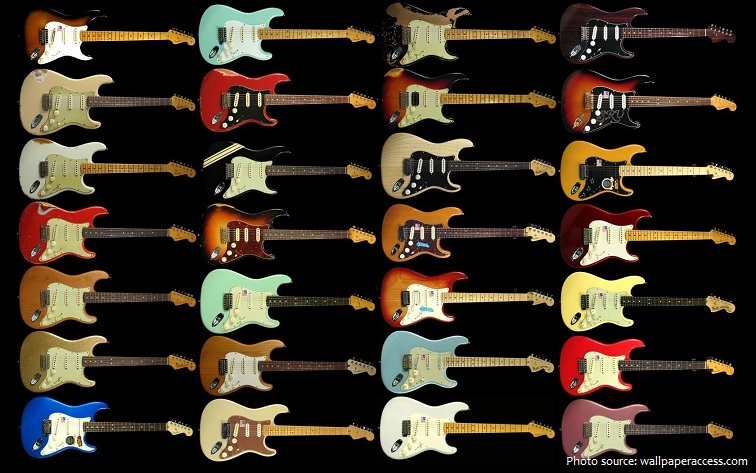
From a popular culture standpoint, the electric guitar is one of the most important inventions of the 20th century. More than any other instrument, it defines the tone and character of rock and roll music. But when the electric guitar first hit the scene in the 1930s, few people saw its potential. It took quite a while for the instrument to find its place in American music.
Despite the slow start, the electric guitar did find its place. It has inspired and defined entirely new types of music. The electric guitar remains the most prominent instrument in rock music, and the most famous instrument ever to come out of the United States.
Invented in 1932, the electric guitar was adopted by jazz guitar players, who wanted to play single-note guitar solos in large big band ensembles.

Gibson’s first production electric guitar, marketed in 1936, was the ES-150 model – “ES” for “Electric Spanish”, and “150” reflecting the $150 price of the instrument, along with matching amplifier.
A major difficulty for the first electric guitars with pickups attached to their bodies was the acoustic phenomenon called “feedback,” where sound amplified by an amplifier causes the instrument to resonate, creating a cacophony of sound. A clever way to solve this issue is to remove the hollow
cavity from the guitar body, making it difficult for sound to resonate. This led to the creation of the solid-body guitar, in which the body is carved from a single piece of wood.
In 1946, Leo Fender designed the first commercially successful solid-body electric guitar. Using a single magnetic pickup, the model was initially named the “Esquire.” It immediately found favor with country and western artists in California. The two-pickup version of the Esquire was called the “Broadcaster,” which was soon changed to “Telecaster” due to a trademark issue.
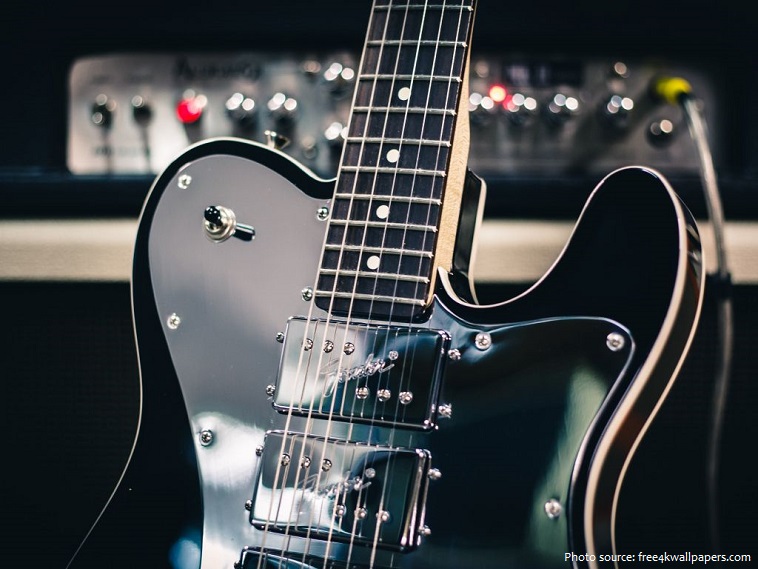
During the 1950s new and innovative instruments were released one after another, with what we consider the modern electric guitar being (mostly) completed in 1960.
It has evolved into an instrument that is capable of a multitude of sounds and styles in genres ranging from pop and rock to country music, blues and jazz. It served as a major component in the development of electric blues, rock and roll, rock music, heavy metal music and many other genres of music.
The most valuable guitar is $2,000,000 and was created by Aaron Shum (Hong Kong). The value was certified in Hong Kong, China, on 15 March 2015. The guitar is called ‘Eden of Coronet’ and is adorned with 11,441 pieces of diamond (401.15 carats) and 18k white gold (1.635 kg / 57.67 oz). It
was formally unveiled at the Swiss Baselworld exibition.
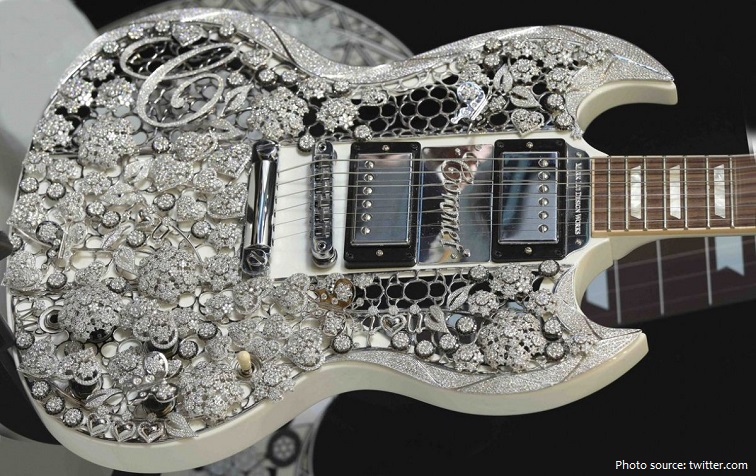
The title of the most expensive guitar in the world is the “Reach Out To Asia” Fender Stratocaster, which sold for $2.7 million in 2015. This guitar was the result of Bryan Adams “Reach Out To Asia” project / which was set up to help the victims of the 2004 Indian Ocean earthquake and tsunami.
The most jewels on a guitar is 16,033 and was achieved by Aaron Shum Jewelry Ltd. (Hong Kong) in Basel, Switzerland, as verified on 11 March 2016. The Fender guitar was decorated with a range of stones including topaz, citrine, rhodolite and cubic zirconium.
The largest playable electric guitar in the world is 13.29 m (43 ft 7.5 in) tall, 5.01 m (16 ft 5.5 in) wide and weighs 907 kg (2,000 lb). Modelled on a 1967 Gibson Flying V and built to a scale of 1:12, it was made by students from Conroe Independent School District Academy of Science and Technology, Conroe, Texas, USA at a cost of US$3,000 (£1,975). With construction beginning in October 1999, the instrument was finally played at the Cynthia Woods Mitchell Pavilion on 6 June 2000 with the opening chord of ‘A Hard Day’s Night’.
The largest guitar amplifier measures 3.06 m (10 ft 0.47 in) long, 2.47 m (8 ft 1.24 in) tall, and 1.30 m (4 ft 3.18 in) wide, achieved by Full Sail University (USA) at the Camping World Stadium in Orlando, Florida, USA, on 30 June 2017.
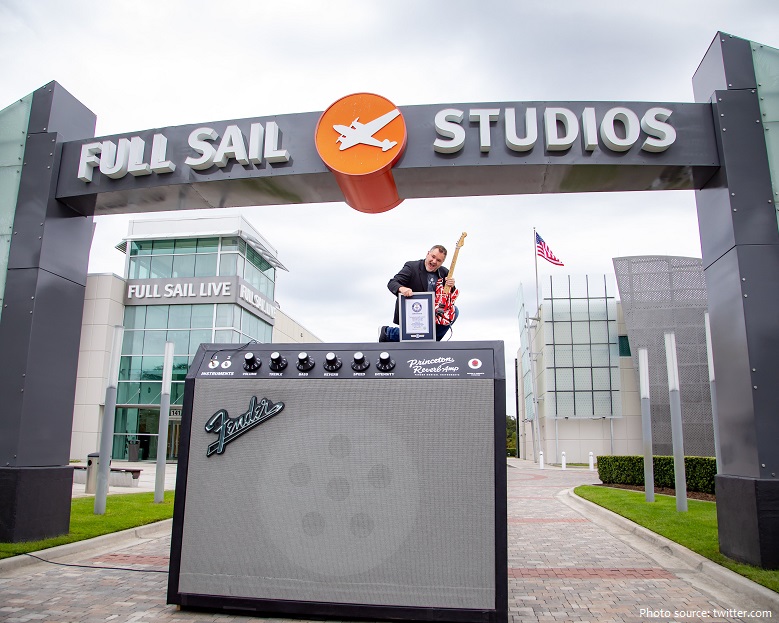
Smallest replica guitar is a guitar carved from a block of silicon and based on a Fender Stratocaster, measured ten micrometres long – 1/20 the thickness of human hair. Made in 1997 in just twenty minutes by scientists at the Cornell University, New York, USA, each of its six strings were 0.05 micrometres thick, equivalent to 100 atoms laid end to end.
The largest electric guitar ensemble involved 368 participants, and was achieved by Sky Group (India) at Agri Expo,Dimapur, Nagaland, India on 12 January 2013. The event was organised to promote unity and peace in Nagaland. It involved participants between the age group of 11 to 70 years and performed on ‘Knocking on heaven’s door’ song by Guns N’ Roses.
